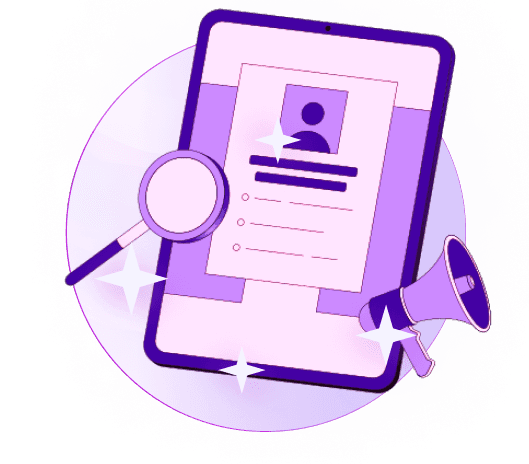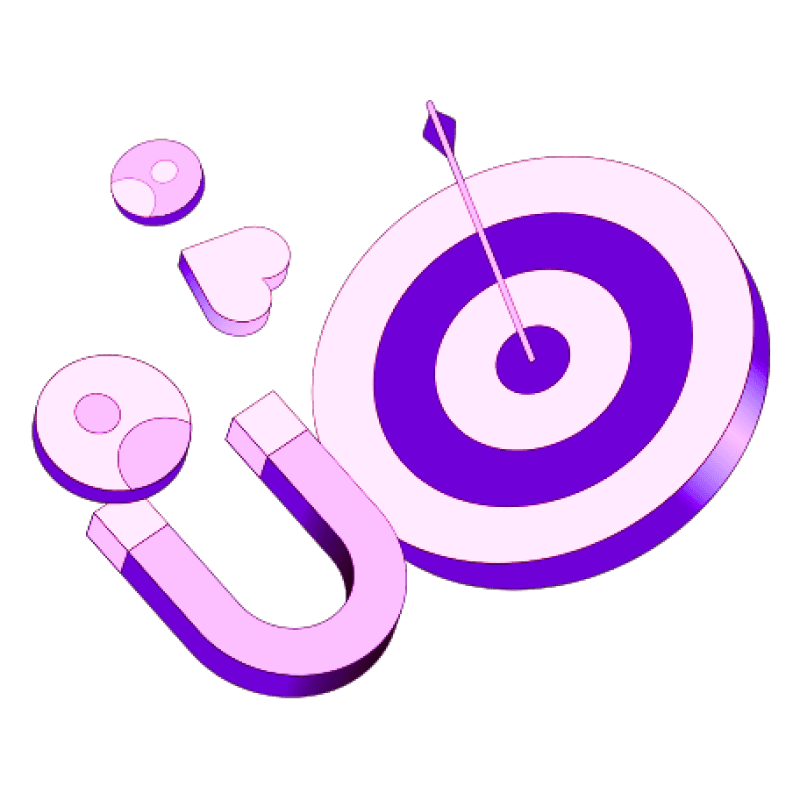Blogs
Articles

What is a Sales Pipeline? A Simple Guide That Actually Makes Sense
Companies with well-laid-out sales pipelines win 16% more deals. Your ability to understand a sales pipeline could mean the difference between reaching your targets and watching opportunities fade away.
A sales pipeline shows you exactly where each prospect stands in your sales process. You can spot the next steps, potential obstacles and areas that need work. The pipeline puts your actions first throughout the entire process, which sets it apart from a sales funnel that measures conversion rates.
88% of sales professionals say their teams prospect effectively. The reality? About 60% of prospects need four "no's" before they say "yes." Here's what's really eye-opening - half of all salespeople give up after the first rejection.
What is the pipeline in sales?
A sales pipeline gives you a visual snapshot of your potential customers' position in the sales process. Your prospects' trip from the first contact to final purchase appears on this map, which helps sales teams track progress at each stage. Most companies show their pipeline as a horizontal bar with different stages, while some prefer a Kanban-style board to show their buyer's trip.
Sales teams need a clear, structured view of their operations through a sales pipeline. This organized view helps teams manage potential deals better, spot roadblocks quickly, and move opportunities toward closure. Sales leaders can also use a resilient pipeline to distribute resources wisely, find bottlenecks, and predict sales accurately.
How do sales pipelines work?
Sales pipelines track prospects as they move through specific stages in your sales process. Each stage comes with clear entry and exit checkpoints that show when prospects can advance. Prospects move forward as they meet these requirements, and their progress stays recorded in a CRM system.
Picture a flowing river - problems upstream create issues downstream naturally. Your presentation materials might need a review or your sales team could use extra training if deals keep stalling at the meeting/demo stage.
Pipeline data shows important metrics like stage-to-stage conversion rates. To cite an instance, see this ground example: a B2B software company found that from 150 original leads, 120 qualified (80%), 85 reached proposals (71%), 42 entered negotiations (49%), and 28 closed successfully (67%) – an overall lead-to-customer conversion rate of 19%. This analysis points exactly where teams should focus their improvements.
Sales teams can prioritize valuable leads, respond quickly, and spot common traits among converting prospects through structured pipeline management that drives consistent results.
What is a sales pipeline vs sales funnel?
Sales pipelines and sales funnels are two different concepts that people often mix up. Sales teams need to know the difference between them to get better results from their processes and customer strategies.
Sales pipeline looks at things from the seller's side. It tracks activities, deal progress, and steps your team takes to turn prospects into customers. The sales funnel takes the buyer's view and maps out how leads move through their relationship with your business.
You can spot the basic difference in how they look. A pipeline runs horizontally through different stages. A funnel looks like an upside-down cone - wide at the top, narrow at the bottom. This shape shows how qualified leads move down and some drop off along the way.
Here's a simple breakdown of what makes them different:

Your team might say a lead is "stuck in the pipeline" if a prospect needs help moving forward. The funnel works differently - leads don't get stuck there. They either convert or they don't.
Smart teams use both models to get better results. The pipeline helps manage daily sales work, and the funnel helps understand how customers behave and convert. Together, they give you a complete picture of your sales process.
What are the stages of a sales pipeline?
The path from first contact to final handshake shapes every successful deal. Companies structure their sales pipeline stages to match their buyers' decision-making process. The number of stages can vary based on industry, product complexity, and sales approach.
A sales pipeline usually follows these seven key stages that guide buyers through their purchase experience:
Prospecting: Sales teams spend this first stage looking for potential customers through advertising, promotional activities, and targeted outreach. They focus on finding prospects who match their ideal customer profile and could benefit from their solutions.
Lead Qualification: Sales professionals know that leads differ in quality. They assess each prospect's genuine interest, budget, decision-making power, and specific needs. E-books and webinars are a great way to get insight into interest levels.
Demo or Meeting: Qualified prospects get a tailored introduction to your offerings. This significant step lets sales teams show value and determine if there's enough business potential to move forward.
Proposal: Sales representatives create a formal solution that tackles the prospect's specific challenges. Their proposal highlights pricing, features, and competitive advantages that separate your offering from others.
Negotiation and Commitment: Both parties work to finalize terms, adjust scope, discuss pricing details, and set partnership expectations. The goal is reaching an agreement that benefits everyone.
Closing: The prospect becomes a customer by signing the contract. The deal moves to fulfillment as the relationship begins.
Post-Purchase: Many companies include this last stage to focus on customer success. The core team delivers exceptional onboarding, tracks account progress, finds cross-selling opportunities, and prepares for renewals.
How do you evaluate your sales pipeline?
Your sales pipeline needs regular checkups just like your health to spot problems early. You should collect vital data from your CRM and sales tools. This data includes details about current leads, conversion rates and the time prospects spend at each pipeline stage.
These key metrics will help you assess your pipeline:
Win rate - The percentage of deals you close gives you a complete view of how well your pipeline works
Sales cycle length - Deal closure time helps you find opportunities that aren't moving
Average deal size - This metric is significant to forecast revenue and track quota progress
Pipeline velocity - Shows how fast money flows through your pipeline. You can calculate this by multiplying opportunities, win rate, and average deal value, then dividing by sales cycle length
Opportunity-to-close rate - Your success rate at converting pipeline deals into actual revenue
Finding bottlenecks becomes vital during assessment. Your deals might get stuck at specific points - like proposals taking weeks or prospects going silent during negotiations. These stuck points show significant issues that could come from poor follow-ups, low-quality leads, or problems in your sales approach.
How do you take your sales pipeline to the next level with Persana AI?
Persana AI's AI-powered tools can transform an average sales pipeline into an exceptional one through intelligent automation and analytical insights. The platform simplifies your sales process to help generate more revenue.
Persana AI works as a complete platform that combines extensive data resources with intelligent automation. The platform connects to over 700 million contacts and 300 million companies through 75+ integrated data providers. This gives it better coverage and accuracy for contact information, with higher match rates than other solutions.
The platform's signal-based selling approach makes it highly effective. The system tracks buyer intent signals like job changes and hiring activities and notifies you immediately when prospects change careers. This helps you catch the right moments to reach out to potential customers.
The platform's 24/7 AI Sales Agent automates pipeline generation continuously. It handles prospecting tasks, personalizes outreach, and simplifies engagement. Your team can focus on closing deals instead of doing manual research. Tasks that used to take weeks can now be done in minutes with Persana's simplified processes.
Persana also excels at enriching data through its waterfall approach. It connects to multiple sources to confirm contact information live. Your team will always have current, accurate data when they contact prospects.
Adding Persana AI to manage your sales pipeline creates a more agile, data-driven approach to business growth. You can substantially increase qualified meetings while reducing manual work through hyper-personalization, intelligent data enrichment, and automated prospecting workflows.
Conclusion
Your success in today's competitive business world depends on how well you manage your sales pipeline. This piece explores sales pipelines, their differences from sales funnels, seven crucial stages they include, and ways to review their performance.
Sales pipelines work as your revenue roadmap. They show where prospects stand and what your team needs to do next. Well-laid-out pipeline management guides teams toward higher win rates, smarter resource use, and more accurate revenue forecasts.
Pipeline health needs constant attention. Regular reviews help spot bottlenecks and optimize conversion rates while keeping your team focused on valuable opportunities. Companies that become skilled at pipeline management perform better than competitors. They keep deal flow steady and adapt quickly to market changes.
Modern tech has made pipeline management substantially more efficient. You can see how AI-powered solutions streamline your sales process by checking out Persana AI to reshape your approach to prospecting and pipeline growth.
FAQ
Successful sales teams thrive on knowing how to track and nurture potential deals systematically. Let's tackle some common questions about sales pipelines.
Why is a sales pipeline important?
Sales pipelines drive business growth. Companies with proper pipeline management see about 15% higher growth rates than those without structured processes. The numbers get even better. Organizations using specific pipeline management practices can push that growth advantage up to 28%.
Sales pipelines bring several key benefits:
Better visibility and forecasting: They give sales teams a central view to track progress with potential buyers. Clear data on deal values and closing chances helps predict revenue accurately.
Better performance tracking: Team leaders can see how individuals and teams perform. This visibility helps them coach effectively, reward top sellers, and help those who need support.
Smart decision-making: Leaders who monitor pipeline metrics learn about ways to improve. These insights help them make better choices about hiring, training sales reps, and adjusting ad spending.
Process standardization: A well-laid-out sales pipeline structures daily work. Teams can execute and analyze their tasks better. Harvard Business Review found that B2B companies using formal sales processes grew revenue 18% faster than others.
What does pipelining mean in sales?
Sales pipelining tracks opportunities from beginning to end. Teams analyze wins and losses to keep getting better. This framework propels your business development forward.
The process turns leads into paying customers through generation, tracking, and communication. Sales teams can organize prospects, measure goal progress, and spot problems before they affect revenue.

Create Your Free Persana Account Today
Join 5000+ GTM leaders who are using Persana for their outbound needs.
How Persana increases your sales results
One of the most effective ways to ensure sales cycle consistency is by using AI-driven automation. A solution like Persana, and its AI SDR - Nia, helps you streamline significant parts of your sales process, including prospecting, outreach personalization, and follow-up.



